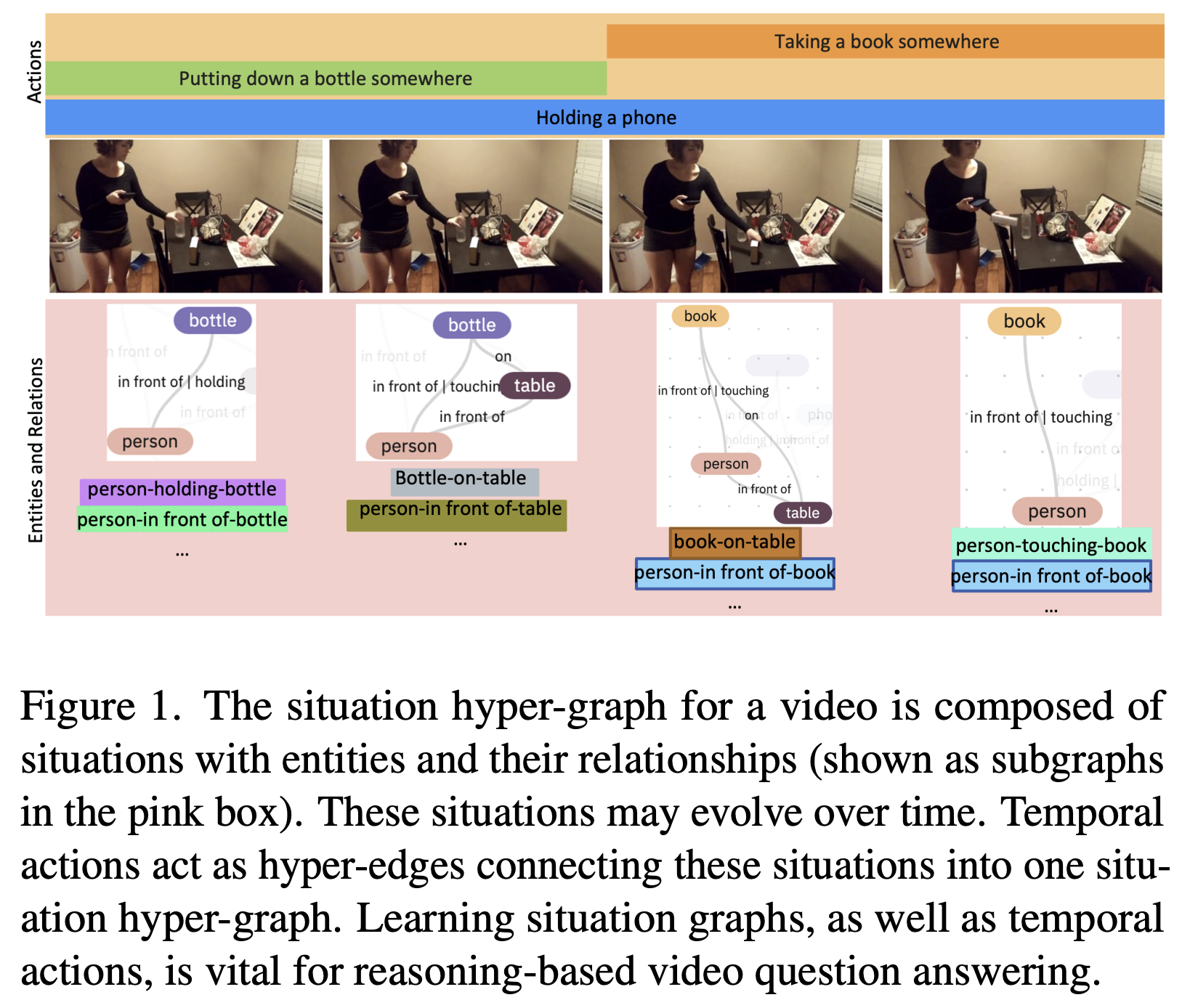Learning Situation Hyper-Graphs for Video Question Answering
Answering questions about complex situations in videos requires not only capturing the presence of actors, objects, and their relations but also the evolution of these relationships over time. A situation hyper-graph is a representation that describes situations as scene sub-graphs for video frames and hyper-edges for connected sub-graphs and has been proposed to capture all such information in a compact structured form. In this work, we propose an architecture for Video Question Answering (VQA) that enables answering questions related to video content by predicting situation hyper-graphs, coined Situation Hyper-Graph based Video Question Answering (SHG-VQA). To this end, we train a situation hyper-graph decoder to implicitly identify graph representations with actions and object/human-object relationships from the input video clip. and to use cross-attention between the predicted situation hyper-graphs and the question embedding to predict the correct answer. The proposed method is trained in an end-to-end manner and optimized by a VQA loss with the cross-entropy function and a Hungarian matching loss for the situation graph prediction. The effectiveness of the proposed architecture is extensively evaluated on two challenging benchmarks: AGQA and STAR. Our results show that learning the underlying situation hyper-graphs helps the system to significantly improve its performance for novel challenges of video question-answering tasks.
PDF Abstract CVPR 2023 PDF CVPR 2023 AbstractCode
Datasets
Results from the Paper
 Ranked #6 on
Video Question Answering
on AGQA 2.0 balanced
(Average Accuracy metric)
Ranked #6 on
Video Question Answering
on AGQA 2.0 balanced
(Average Accuracy metric)







 Charades
Charades
 AGQA
AGQA
 STAR Benchmark
STAR Benchmark